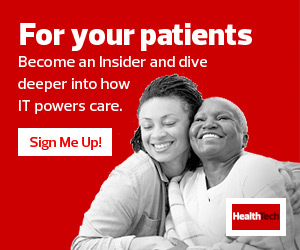HEALTHTECH: Can you give an overview of the study and your findings?
NGUYEN: My team wanted to look at where the progress on research has been for nurse burnout and EHR use. We also wanted to see what recommendations nurses have offered as opposed to recommendations provided by physicians, healthcare administrators or other non-nurses. We reviewed over 4,500 articles and found only 12 papers that could give us more information on this.
There were many more studies examining physician burnout and EHRs than nurse burnout. Even so, we were able to uncover a few themes. We found nurses’ recommendations focused on a few key areas: investing in additional computer workstations, offering tailored EHR training, getting nurses’ feedback or direct involvement with helping the EHR team align their EHR workflows to match their nursing work, and developing screen designs that could summarize concisely a wealth of patient data to minimize clicking and searching.
FELDMAN: I am encouraged by how many studies I am starting to see around nurse burnout and wellness specifically, and I think we will see a lot more in 18 to 24 months after the height of the pandemic.
Nurses really are the front line of the bedside. They are the people who transmit data and translate it into actionable information, frequently without the physician at the bedside. That’s what’s needed, and they’re really good at it.
HEALTHTECH: How is the well-being of nurses impacted by EHR use?
NGUYEN: Many clinicians went to school to make a difference in patients’ lives. That often means having direct, face-to-face patient interactions. What we’re seeing here is a lot of folks going through those training pathways only to go into a working environment that has them spend more time with the EHR than they really want to. If I’m making a nurse do more typing than bedside care, that’s probably going to have a long-term effect by creating this general disdain toward the EHR.
Recognizing that the EHR is a tool to facilitate patient care rather than an end to that is probably going to be key to mitigating well-being issues among nurses.
MERLO: The EHR has resulted in siloing the work effort. Physicians might go back to their offices while nurses have access to a workstation on wheels or a computer at a nurse’s station. They’re doing their work independently and isolated now in a way that’s very different from how it occurred when you had paper charts sitting in a cart in the nurse’s station. There were opportunities to ask a quick question when the physician or pharmacist came in to check something from the chart. Now you might not even be in the same building when the documentation is occurring.
The additional effort of having to call, email or text the other members of the healthcare team adds this extra burden of time and effort on top of waiting for a response. However, there are definite benefits as well, because more information is available quickly. You can get your test results right away; you don't have to flip through pages. It can be easier to find and share information across systems or across buildings in a way that you couldn’t when it required faxing.













